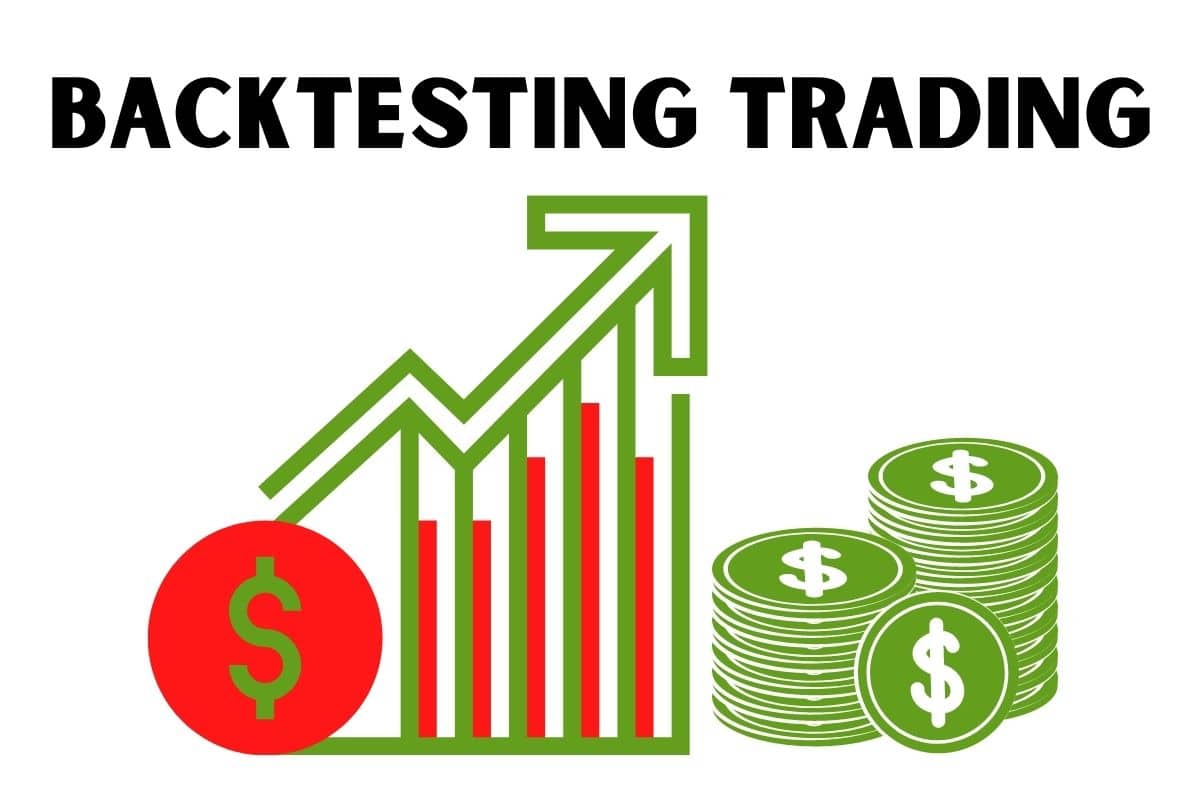A publicly traded company issues every share available for purchase on the stock market. A company becomes publicly traded by making an initial public offering (IPO) of its shares, which helps it raise capital and gives both investors and the company a powerful way to create wealth. The stock market has proven to be one of the most powerful wealth-creation vehicles in history. The total value of all shares issued by publicly traded US companies, or the market capitalization of the US stock market, is currently around $50 trillion. Investors must understand the distinction between public and private companies, as well as the requirements that publicly traded companies must meet. So, in this blog post, we’ll discuss a list of publicly traded companies in the US, as well as some examples, and see how many there are.
What are Publicly Traded Companies?
Publicly traded companies, also known as publicly listed companies, are those that have their shares listed on any of the stock exchanges that allow the trading of their shares to the general public, i.e., anyone can sell or buy their shares on the open market.
How Do Publicly Traded Companies Work?
A publicly traded company has listed itself on at least one public stock exchange and has issued securities to public investors for ownership in the organization. Being a public company has benefits such as increased liquidity and access to large amounts of capital. At the same time, there are some drawbacks, such as the numerous regulatory audits and reporting requirements.
A certain percentage of the shares are issued to the public, but the majority shareholder retains control. Going public means that the secondary market can determine the value of the entire company through trading between investors.
Initial Public Offerings are a method used by private companies to go public. They hire investment bankers to help them prepare a prospectus and, if possible, underwrite the issue. Investment bankers also research to determine the best offer price.
Characteristics of Publicly Traded Companies
- A public company is distinguished by its market capitalization, which is simply the market value of its shares multiplied by the number of shares outstanding. A company with $1 million shares outstanding and a $20.00 share price has a market capitalization of $20 million.
- In contrast to the unlimited liability of private companies, partnerships, or sole proprietorships, a public company is distinguished by its limited liability. This means that in the event of a lawsuit against the company, no individual shareholder will be held liable, i.e., no individual responsibility.
- A public company is a going concern with perpetual succession. This means that the board members of the company will always succeed in the event of dissolution or retirement, and the company will live forever.
How Do They Raise Capital?
Let us examine the process of raising capital by going public, which is used by all companies, from small publicly traded companies to large ones:
- A team is formed for an external IPO, which will include various stakeholders such as investment bank underwriters, lawyers, certified accountants, and Securities Regulator experts.
- Appropriate details and information, such as financial performance and future results forecasts, are included in the company prospectus and reviewed by the aforementioned stakeholders.
- External auditors then conduct an audit of the prospectus’ financial performance to generate opinions.
- The company then files its prospectus with the Securities and Exchange Commission, along with any mandatory documents required by the Commission, and sets a date for the offering.
List of Publicly Traded Companies
Here is a list of publicly traded companies with the highest market capitalizations. They are referred to as the most valuable companies in the media, which refers to their market value.
- PetroChina
- Apple
- Amazon
- Saudi Aramco
- Microsoft
- Alphabet
- Meta
- Tesla
- NVIDIA Corporation
- Berkshire Hathaway Inc.
- JPMorgan Chase & Co.
- Alibaba Group Holding Ltd
Publicly Traded Companies Examples
Shares of these companies are traded on the open market by retail and institutional investors alike. Privately held companies typically choose to go public after meeting all regulatory requirements because it requires a significant amount of capital. Procter & Gamble, Google, Apple, Tesla, and other well-known publicly traded companies are examples.
How Many Publicly Traded Companies are there
According to the Vanguard Total World fund holdings, there are 9,461 publicly traded companies. However, ETF does not necessarily own all stocks.
There are approximately 37,000 publicly traded companies in the world if you include OTC exchanges, more developing countries, or countries with conflicting regulations like Saudi Arabia and Russia (which Vanguard does not offer in the fund).
You can broaden that to include bankruptcies, ADRs, and preferred stock, and there are well over 100k individual securities traded on 135+ exchanges worldwide.
Advantages & Disadvantages of Publicly Traded Companies
Top publicly traded companies choose to sell a portion of their company to the public to raise capital or diversify. However, this process can have both advantages and disadvantages. Let us discuss them through the points below:
Advantages
- Publicly traded companies have distinct advantages over privately held companies, such as the ability to sell future equity stakes, raise more capital by issuing stocks, attract a broader range of investors, and so on. However, being public exposes such organizations to increased regulatory scrutiny and gives owners and company founders far less control over the company’s decisions.
- In addition, companies are required by the securities regulator to release annual reports and other mandatory documents, and shareholders are also entitled to additional documents.
- Shareholders also vote on certain corporate decisions, such as changing the corporate structure. Such companies can also choose to go private if the owners buy back all of their shareholders’ shares at a premium or discount based on the performance of the company.
Disadvantages
- Publicly traded companies have access to a large amount of capital because they can issue additional stock and attract new investors. They also have no major liquidity concerns because they have access to a large number of investors. Privately held companies do not have ready access to capital and may sell shares to venture capital and private equity players.
- In contrast to publicly traded companies, which are subject to stringent regulatory requirements imposed by the country’s securities and exchange commission, privately held companies are exempt from such requirements.
- Privately held companies must report when they have more than 500 shareholders and $10 million in assets. Publicly traded companies are required to file mandatory annual reports, quarterly reports, and other reports. Additional information must be provided to the company’s shareholders. Because there is so much information available, valuing a publicly traded company is much easier. This is due to the securities regulator’s mandatory reporting requirements.
- DCF, Comparable Company Analysis, and Transaction Methods can be used to value them. Although the above three methods are used to value privately held businesses, they are less reliable due to a lack of information.
Publicly Traded Companies vs Private Traded Companies
The claim of ownership and the ability to list on markets are the primary distinctions between a public company and a private company. When a company goes public, it allows investors or traders from the general public to buy or sell its stock. A private company, on the other hand, does not list its stock on any public stock exchange and thus cannot be traded publicly.
To understand the distinction between these two entities, it is necessary to recognize that a private company is similar to a public company in terms of financing, funding, and investment opportunities. A private company can attract individual or institutional investors in exchange for ownership.
However, the transaction or deal is not conducted in the open market.
A private company is not accountable to any kind of shareholder. Even if the company has investments from individuals or institutions, there is no such agreement as there is between a public company and its shareholders.
Investors can become the first shareholders of a public company by subscribing to its initial public offering (IPO). These shares can then be traded on stock exchanges, and their price is determined by market forces such as supply and demand, among others.
There must be at least one shareholder. However, there is no limit to the number. There is no minimum number of directors for non-public companies, but it is frequently one. Public companies in several provinces and territories, as well as the federal government, may be required to have a certain number of directors (i.e., more than one).
What are the Requirements for a Company to go Public?
The company’s revenue must be consistent and reliable. The public markets dislike it when a company fails to anticipate or misses its earnings. As a result, the company must be established enough to accurately forecast the upcoming quarters and the expected earnings for the following year.
Transparency and Ongoing Disclosures
A public company’s disclosure obligations begin with the initial registration statement that it files with the SEC. However, the disclosure requirements do not stop there. By filing periodic reports and other materials with the SEC, public companies must continue to keep their shareholders informed on a regular basis. The SEC makes these documents available to the public for free on its EDGAR website. The documents filed are subject to SEC staff review for compliance with federal securities laws.
The following are some of the reports that public companies based in the United States may file. Different types of reports may be filed by foreign companies with the SEC.
#1. Form 10-K Annual Reports.
This report contains the company’s audited annual financial statements as well as a discussion of the company’s business results.
#2. Quarterly Form 10-Q reports.
For each of the first three quarters of their fiscal year, public companies must file this report. The quarterly report contains unaudited financial statements as well as information about the company’s operations and results for the previous three months and the entire year. The quarterly report compares the company’s performance in the current quarter and year to date to the same periods in the previous year.
#3. Form 8-K Current Reports.
Companies file this report with the SEC to announce significant events that shareholders should be aware of, such as bankruptcy proceedings, a change in corporate leadership (such as a new director or high-level officer), and preliminary earnings announcements.
#4. Proxy Statements
One of the most important rights of shareholders is the right to vote. They can elect members of the board of directors, vote on executive compensation in a non-binding manner, approve or reject proposed mergers and acquisitions, and vote on other important issues. Proxy statements explain the issues to be voted on and frequently reveal information about the company’s executive compensation policies and practices.
#5. Additional Disclosures.
Other federal securities laws and SEC rules require disclosures about a variety of events affecting the company. These include proposed mergers, acquisitions, and tender offers; securities transactions by company insiders; and beneficial ownership by a person or group equal to or greater than 5% of the company’s outstanding shares.
Why are Companies Publicly Traded?
Because they have the ability to tap the financial markets by selling stock (equity) or bonds (debt) to raise capital (i.e., cash) for expansion and other projects.
Is Nike a Publicly Traded Company?
Yes. Nike is a publicly traded business.
What is the Difference Between a Public Company and a Publicly Traded Company?
A public company is also known as a publicly traded company. What does it mean to have a publicly traded company? It means that anyone can sell or buy shares in these companies on the open market.
What Defines a Publicly Traded Company?
There are two commonly understood ways in which a company is considered public: first, the company’s securities trade on public markets; and second, the company discloses certain business and financial information regularly to the public
How Do You Tell if a Company is Publicly Traded?
A company is public if its shares are traded on a stock exchange such as the Toronto Stock Exchange or the New York Stock Exchange.
How Does a Company Become Publicly Traded?
Going public typically refers to a company’s initial public offering, or IPO, in which it sells shares of stock to the general public in order to raise additional capital.
Conclusion
Public companies are answerable to stockholders because stockholders directly vote on significant decisions of the company/business. Voting rights are distributed proportionally to each shareholder. A public company follows and is mandated by regulations to do so, standards, and prescribed formats of reporting to the shareholder.
Public companies work to maximize shareholder wealth, growing their business and public trust. Such companies should refrain from principal-agent problems (agency problems). If a company incentivizes its senior management, it may run the risk of managers producing false reports of growth and profits.
Related Articles
- COMPANY INFORMATION: How to Find & Update Company Info in 2023
- PRIVATE INVESTMENTS IN PUBLIC EQUITY: Detailed Guide
- GAAP: Overview, Importance, History, Limitations
- Reverse Merger Stocks: Overview & Examples
- FINANCIAL RATIO ANALYSIS: Detailed Guide to Interpretation of Financial Analysis






